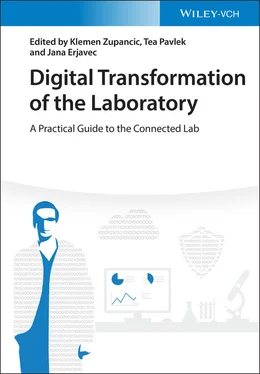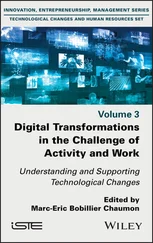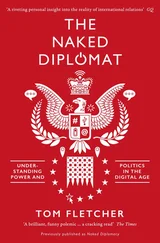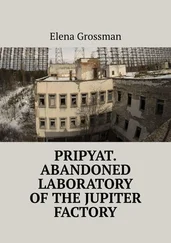18 18 Hok Architects Francis crick lab design. https://www.hok.com/projects/view/the-francis-crick-institute/(accessed 1 February 2020).
19 19 Crow, J.M. (2020). Sustainable lab buildings. Chemistry World 17 (3): 24–29.
20 20 Steele, J. (2019). https://www.forbes.com/sites/jeffsteele/2019/08/12/the-future-of-life-science-and-tech-innovation-is-in-clusters/(accessed 1 February 2020).
21 21 Economist The world's most valuable resource is no longer oil but data (2017). https://www.economist.com/leaders/2017/05/06/the-worlds-most-valuable-resource-is-no-longer-oil-but-data(accessed 1 February 2020).
22 22 (i) Marr, B. Here's why data is not the new oil (2018). https://www.forbes.com/sites/bernardmarr/2018/03/05/heres-why-data-is-not-the-new-oil. (ii) van Zeeland, J. Data is not the new oil. https://towardsdatascience.com/data-is-not-the-new-oil-721f5109851b(accessed 1 February 2020).
23 23 The Guardian Keep it in the ground (2019). https://www.theguardian.com/environment/series/keep-it-in-the-ground(accessed 1 February 2020).
24 24 Extinction Rebellion https://rebellion.earth/(accessed 1 February 2020).
25 25 Weiser, M. (1991). The computer for the 21st century. Scientific American 265 (3): 94–104.
26 26 Farooq, M.U. (2015). A review on internet of things (IoT). International Journal of Computer Applications 113 (1): 1–7. https://doi.org/10.5120/19787-1571.
27 27 Wilkinson, M.D., Dumontier, M., Aalbersberg, I. et al. (2016). The FAIR guiding principles for scientific data management and stewardship. Scientific Data 3: 160018. https://doi.org/10.1038/sdata.2016.18.
28 28 SiLA Consortium https://sila-standard.com/(accessed 1 February 2020).
29 29 Oberkampf H, Krieg H, Senger C, et al. (2018). Allotrope data format – semantic data management in life sciences. https://swat4hcls.figshare.com/articles/20_Allotrope_Data_Format_Semantic_Data_Management_in_Life_Sciences_pdf/7346489/files/13574621.pdf(accessed 1 February 2020).
30 30 Feynman, R.P. (1999). Simulating physics with computers. International Journal of Theoretical Physics 21 (6/7): 467–488.
31 31 Katwala, A. (2020). Quantum computers will change the world (if they work). https://www.wired.co.uk/article/quantum-computing-explained(accessed 1 February 2020).
32 32 Gershon, T. (2019). Quantum computing expert explains one concept in 5 levels of difficulty | WIRED. https://www.youtube.com/watch?v=OWJCfOvochA(accessed 1 February 2020).
33 33 Mohseni, M., Read, P., Neven, H. et al. (2017). Commercialize quantum technologies in five years. Nature 543: 171–174. https://doi.org/10.1038/543171a.
34 34 Perkel, J. (2017). The internet of things comes to the lab. Nature 542: 125–126. https://doi.org/10.1038/542125a.
35 35 Wikipedia Big data. https://en.wikipedia.org/wiki/Big_data(accessed 1 February 2020).
36 36 Jacobsen, A., Azevedo, R., Juty, N. et al. (2020). FAIR principles: interpretations and implementation considerations. Data Intelligence 2: 10–29. https://doi.org/10.1162/dint_r_000.
37 37 (2018). Laboratory automation – robots for life scientists. https://www.nanalyze.com/2018/04/laboratory-automation-robots-life-scientists/(accessed 1 February 2020).
38 38 General data protection regulation. https://gdpr-info.eu/(accessed 1 February 2020).
39 39 Regulation (EU) 2016/679 of the European Parliament and of the Council. https://eur-lex.europa.eu/eli/reg/2016/679/oj(accessed 1 February 2020).
40 40 Informed consent. https://www.emedicinehealth.com/informed_consent/article_em.htm(accessed 1 February 2020).
41 41 What is cloud computing? https://azure.microsoft.com/en-us/overview/what-is-cloud-computing/(accessed 1 February 2020).
42 42 Hartmann, D. and van der Auweraer, H. (2020). Digital twins. Arxiv. [Preprint] https://arxiv.org/pdf/2001.09747(accessed 1 February 2020).
43 43 Rasheed, A., San, O., and Kvamsdal, T. (2020). Digital twin: values, challenges and enablers from a modeling perspective. IEEE Access 8: 21980–22012. https://doi.org/10.1109/ACCESS.2020.2970143.
44 44 SLAS https://slas.org/(accessed 1 February 2020).
45 45 ELRIG https://elrig.org/(accessed 1 February 2020).
46 46 MIT Computer Science & Artificial Intelligence Lab https://www.csail.mit.edu/(Accessed 1 February 2020).
47 47 Sanderson, K. (2019). Automation: chemistry shoots for the moon. Nature 568: 577–579. https://doi.org/10.1038/d41586-019-01246-y.
48 48 Buermans, H.P.J. and den Dunnen, J.T. (2014). Next generation sequencing technology: advances and applications. Biochimica et Biophysica Acta 1842 (10): 1932–1941. https://doi.org/10.1016/j.bbadis.2014.06.015.
49 49 Empel, C. and Koenigs, R. (2019). Artificial‐intelligence‐driven organic synthesis—en route towards autonomous synthesis? Angewandte Chemie International Edition 58 (48): 17114–17116. https://doi.org/10.1002/anie.201911062.
50 50 Baker, M. (2016). 1,500 scientists lift the lid on reproducibility: survey sheds light on the ‘crisis’ rocking research. Nature 533 (7604): 452–454. https://www.nature.com/news/1-500-scientists-lift-the-lid-on-reproducibility-1.19970(accessed 1 February 2020).
51 51 Protocols.IO https://www.protocols.io/(accessed 1 February 2020).
52 52 IoT Lab https://www.iotlab.eu/(Accessed 1 February 2020).
53 53 Olena, A. Bringing the internet of things into the lab. https://www.the-scientist.com/bio-business/bringing-the-internet-of-things-into-the-lab-64265(accessed 1 February 2020).
54 54 Dehghantanha, A. and Choo, K. (2019). Handbook of Big Data and IoT Security. Cham: Springer https://doi.org/10.1007/978-3-030-10543-3.
55 55 Palmer, E. (2018) Merck has hardened its defenses against cyberattacks like the one last year that cost it nearly $1B. https://www.fiercepharma.com/manufacturing/merck-has-hardened-its-defenses-against-cyber-attacks-like-one-last-year-cost-it(accessed 1 February 2020).
56 56 Lazarev, K. (2016). Internet of things for personal healthcare. Bachelors thesis. https://www.theseus.fi/bitstream/handle/10024/119325/thesis_Kirill_Lazarev.pdf?sequence=1(accessed 1 February 2020).
57 57 User Experience for Life Science https://uxls.org/(accessed 1 February 2020).
58 58 Gartner predicts 25 percent of digital workers will use virtual employee assistants daily by 2021. https://www.gartner.com/en/newsroom/press-releases/2019-01-09-gartner-predicts-25-percent-of-digital-workers-will-u(accessed 1 February 2020).
59 59 Fraunhofer https://www.fit.fraunhofer.de/de/fb/cscw.html(accessed 1 February 2020).
60 60 Tao, F. and Qi, Q. (2019). Make more digital twins. Nature 573: 490–491. https://doi.org/10.1038/d41586-019-02849-1.
61 61 Fuller, A., Fan, Z., Day, C., and Barlowar, C. (2020). Digital twin: enabling technology, challenges and open research. Arxiv. [Preprint] https://arxiv.org/abs/1911.01276. DOI: 10.1109/ACCESS.2020.2998358.
62 62 Borfitz, D. (2019). Space is the new Frontier for life sciences research. https://www.bio-itworld.com/2019/09/16/space-is-the-new-frontier-for-life-sciences-research.aspx(accessed 1 February 2020).
63 63 Castro‐Wallace, S., Chiu, C.Y., Federman, S. et al. (2017). Nanopore DNA sequencing and genome assembly on the international space station. Scientific Reports 7: 18022. https://doi.org/10.1038/s41598-017-18364-0.
64 64 Karouia, F., Peyvan, K., and Pohorille, A. (2017). Toward biotechnology in space: high‐throughput instruments for in situ biological research beyond earth. Biotechnology Advances 35 (7): 905–932. https://doi.org/10.1016/j.biotechadv.2017.04.003.
65 65 SiLA Standard https://sila-standard.com(accessed 1 February 2020).
66 66 SiLA 2 https://gitlab.com/SiLA2(accessed 1 February 2020).
67 67 InCHi Trust https://www.inchi-trust.org/(accessed 1 February 2020).
68 68 DICOM Standard https://www.dicomstandard.org/(accessed 1 February 2020).
Читать дальше











